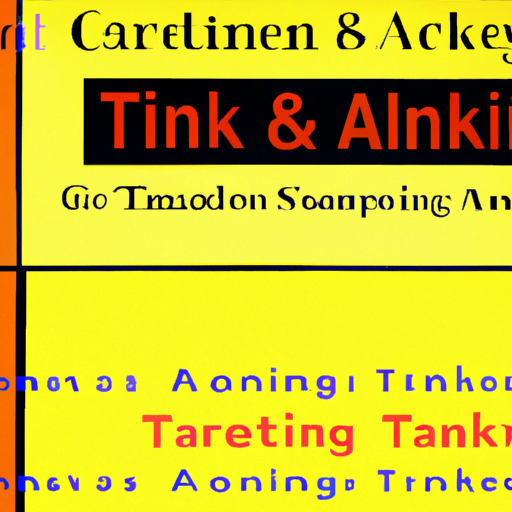-
Table of Contents
Kerning and Tracking: Fine-Tuning Typography
Typography plays a crucial role in design, whether it’s for print or digital media. The way letters and characters are spaced and arranged can greatly impact the readability and overall aesthetic of a piece. Two important aspects of typography that often go unnoticed by the average reader are kerning and tracking. In this article, we will explore the concepts of kerning and tracking, their significance in typography, and how they can be fine-tuned to create visually appealing and legible text.
Understanding Kerning
Kerning refers to the adjustment of space between individual letter pairs. It is a technique used to ensure that the spacing between letters is visually balanced and consistent. The goal of kerning is to create harmonious and visually pleasing text by eliminating awkward gaps or tight spaces between letters.
For example, consider the word “AVOID” in a standard font. Without proper kerning, the combination of the “A” and “V” can create an awkward gap, making the word appear unbalanced. By adjusting the spacing between the “A” and “V,” the word becomes more visually appealing and easier to read.
Kerning is particularly important in headlines, logos, and any other text that requires emphasis. It ensures that the overall design is cohesive and visually appealing, capturing the attention of the reader.
The Art of Tracking
While kerning focuses on the space between individual letter pairs, tracking refers to the adjustment of space between groups of letters or entire blocks of text. It involves increasing or decreasing the overall spacing between characters uniformly.
Tracking is often used to achieve specific design goals, such as creating a more open and airy feel or condensing text to fit within a limited space. It can also be used to improve readability, especially in large blocks of text.
For example, in a paragraph of text, increasing the tracking can make the text easier to read by providing more space between each word. On the other hand, decreasing the tracking can be used to condense text and fit more content within a limited space, such as in a narrow column or a small caption.
The Impact of Kerning and Tracking
The proper use of kerning and tracking can significantly enhance the overall visual impact of typography. Here are some key ways in which they can make a difference:
- Readability: By adjusting the spacing between letters and words, kerning and tracking can improve the legibility of text, making it easier for readers to process and understand.
- Visual Balance: Proper kerning ensures that the spacing between individual letter pairs is visually balanced, creating a harmonious and aesthetically pleasing design.
- Emphasis: Kerning and tracking can be used to emphasize specific words or phrases by adjusting their spacing, drawing the reader’s attention and conveying the intended message more effectively.
- Consistency: By applying consistent kerning and tracking throughout a design, a sense of cohesiveness is achieved, enhancing the overall professionalism and quality of the typography.
Case Studies: The Power of Kerning and Tracking
Let’s take a look at some real-world examples where kerning and tracking have played a significant role in enhancing the visual impact of typography:
1. FedEx Logo
The FedEx logo is a classic example of effective kerning. The space between the “E” and “X” is meticulously adjusted to create a subtle arrow shape, symbolizing speed and efficiency. This clever use of kerning not only enhances the visual appeal of the logo but also reinforces the brand’s message.
2. New York Times
The New York Times is known for its clean and elegant typography. The newspaper’s designers pay careful attention to tracking, ensuring that the text is well-spaced and easy to read. This attention to detail contributes to the overall readability and professionalism of the publication.
3. Apple
Apple is renowned for its minimalist design approach, and typography plays a crucial role in their branding. The company’s use of consistent tracking and kerning across various platforms and products creates a sense of unity and sophistication.
Best Practices for Fine-Tuning Typography
Now that we understand the importance of kerning and tracking, let’s explore some best practices for fine-tuning typography:
- Use a reliable font: Start with a high-quality font that has been designed with proper spacing and kerning. This will provide a solid foundation for your typography.
- Pay attention to letter combinations: Focus on adjusting the spacing between problematic letter combinations, such as “AV,” “WA,” or “To.” These combinations often require special attention to achieve optimal visual balance.
- Consider the context: Take into account the medium and purpose of your typography. Different contexts may require different levels of tracking and kerning. For example, headlines may benefit from tighter tracking, while body text may require more generous spacing for improved readability.
- Test and iterate: Don’t be afraid to experiment and test different kerning and tracking options. Fine-tuning typography is an iterative process that requires careful observation and adjustment.
Summary
Kerning and tracking are essential tools in the world of typography. By adjusting the spacing between individual letter pairs and groups of letters, designers can create visually appealing and legible text. Proper kerning ensures visual balance and harmony, while tracking improves readability and overall design cohesiveness. Through case studies and best practices, we have seen how kerning and tracking can significantly enhance the impact of typography. By paying attention to these often overlooked details, designers can elevate their work and create typography that is both visually stunning and highly effective.
